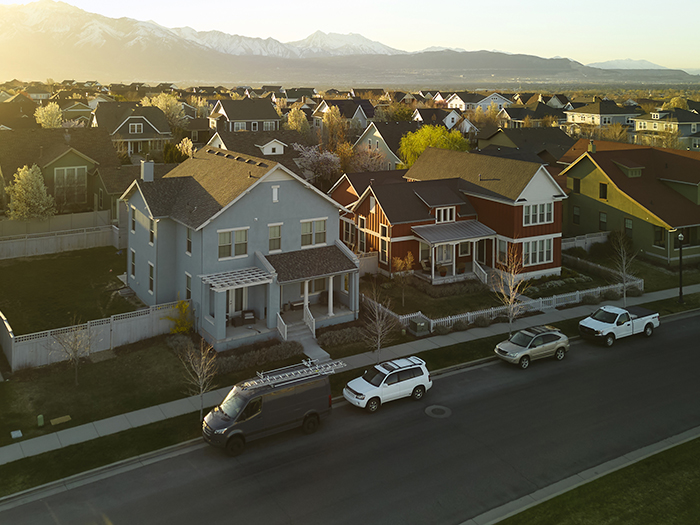6 Questions for Charles Taylor’s Robbie Arnold on Managing Extreme Weather Event Claims

Extreme weather events continue to plague policyholders and their insurers. The combined frequency and severity of hurricanes, wildfires, hail, tornadoes and the like have put many on edge, particularly when it comes to property claims management.
Risk & Insurance® caught up with Robbie Arnold, managing director at Charles Taylor, to discuss the impact extreme weather events have had on claims management and the insurance industry. A University of Georgia graduate with a risk management and insurance degree, Arnold has spent several years in property claims management. Below are the fruits of that conversation, edited for length and clarity.
Risk & Insurance: How have increases in both the frequency and the severity of extreme weather events changed the insurance landscape?
Robbie Arnold: It’s greatly affected the insurer. We hear about hurricanes, and wildfires in California, in Hawaii. There’s just these huge events that have really impacted the insurer so much that policies are underwritten to minimize some of those risks.
Larger deductibles are coming into play as well, not to mention premiums, and then we also see carriers that are pulling out of some of these disaster-prone areas like Florida, Louisiana, California, to name a few.
R&I: How are claims looked at and addressed coming out of these events?
RA: From a property standpoint, when we do have these larger events, there’s huge amounts of claims coming in. And just the sheer volume of claims that come in directly impacts how the insurance companies, adjusters and various vendors, engineers and experts look at them, because there’s such a huge spread and such a massive amount of claims.
We have to look at severity. If there’s a large hurricane, we have to be prepared on the claims side. We have to think about the area that got hit really hard and has devastatingly severe damages. We have to account for the path the storm took.
All that is to say, smaller, less severe claims still need to be given the same amount of attention as the big, devastating claims. Their damages have to be assessed and inspected and dealt with with the same attention to detail. It puts a tremendous strain on the entire industry.
R&I: How does the hard property market play into this conversation?
RA: This hard insurance market directly impacts extreme weather event claims management, because hurricanes, wildfires and other events can create long tails on some of these claims. They may not resolve quickly or may linger longer.
Look at Florida as an example, and its nature as a litigious state. Those claims open up, have an initial review and can creep back up, causing insurance to deal with them for a longer time. Added to that, because hurricanes are so much more frequent right now, a hurricane can hit one day, and then less than 30 days later, another hurricane hits. There isn’t enough time or staff to assess the effects of the first storm before the second lands.
Materials costs more, it takes longer to review, it’s harder to get properties assessed, and just the longer a claim sits, the worse it can become. That’s directly impacting claims and insurance pricing.
R&I: What are some of the best practices you would recommend for claims management?
RA: The reality is, managing extreme weather claims is more than property. This is trying to put people back together; it’s not always the Insured’s happiest moment. We’re not doing renovations on homes; we’re restoring properties back to pre-loss condition after disaster strikes. These people just went through something devastating. Our job is to try to help put them back together.
Therefore, speed is paramount. How fast can we get there? How fast can we get the property looked at? How fast can we turn our visual inspection into a digestible estimate that can get payments into the hands of these policyholders so they can start putting their lives back together?
Customer service that lacks speed suffers, this means the longer a claim sits, there is more opportunity for claims to become inflated or have lawyers or other players brought into the mix. And the longer a claim sits, it almost always becomes more costly.
R&I: It’s good to have that claims management strategy at play. And it’s also good to prevent claims from happening, if it’s possible to take the steps. What would you say are some of those steps businesses can take to become more resilient to extreme weather?
RA: If we can predict a storm or extreme weather event, then we can try to mitigate risk from happening. On a most basic level, that means put your outdoor furniture inside, board up your windows, try to protect your property before it hits. Oftentimes, those precautions aren’t easily done, because we don’t always get formal warning to be able to do that.
I would recommend having your mitigation plan lined up in advance. Know what you’re going to do, know the people you’re going to call, communicate with your agents and your broker. Know what you’re going to do when something happens, as opposed to waiting to call the insurance company or adjuster a week or so after, before the claim gets formalized. Policyholders need to be doing something, so if you can start mitigating risk beforehand, that’ll help limit the severity of the claims as well as protect your property.
R&I: How can insurers adapt their risk management approaches in order to respond to these escalating weather events?
RA: When these events occur, it’s time to embrace the claim. If they’re underwriting in these areas that are in these disaster zones, they’re likely underwriting some policies where it makes them more risk-averse. That mitigates the risk for the carrier, but they still have an exposure.
If policyholders get hit by a big CAT 5 hurricane, it’s still a massive claims area regardless of deductible. And it’s easy to see the extremes, but it’s those middle claims that carriers should work toward minimizing before an event. That means communicating with policyholders on prevention and being fast to assess damage after the fact. As I’ve mentioned, as insurance carriers go in there, the best way to handle a claim or a loss is to act quickly. &










